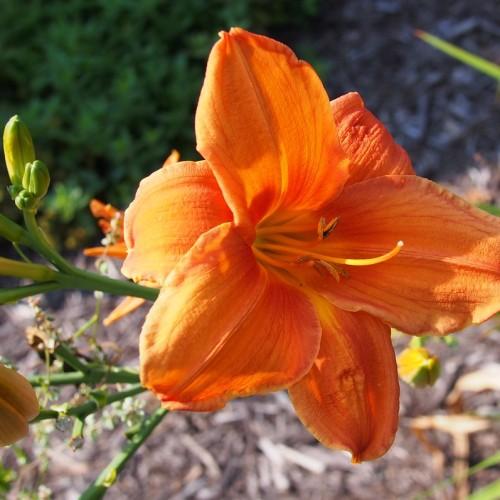
daylily
Hemerocallis 'Double Doodah'
Cycle:
Herbaceous Perennial
Watering:
Average
Hardiness Zone:
3 - 9
Flowers:
Flowers
Sun:
Full sun,part shade
Leaf:
Yes
Growth Rate:
High
Maintenance:
Low
Drought Tolerant:
Yes
Salt Tolerant:
Yes
Care Level:
Medium
watering
The daylily (Hemerocallis 'Double Doodah') should be watered when the top inch of soil is dry. It should be watered deeply, providing enough water to moisten the entire root area, 1-2 inches. The daylily should not be watered frequently, as too much water can cause root rot. It is better to water deeper less frequently, so the soil can dry out some between waterings. Water the daylily 1-2 times a week, and avoid over-watering.
sunlight
The Daylily (Hemerocallis 'Double Doodah') requires 4 to 6 hours of direct sunlight each day. Daylilies need midday sunlight, but can also benefit from morning or afternoon sun as well. Additionally, the Daylily should be planted in a spot with bright and indirect light during the day. When grown in an area with too much shade or too little sunlight, the Daylily will produce fewer flowers and a reduced display of color.
pruning
Daylilies (Hemerocallis 'Double Doodah') should ideally be pruned twice a year, in early spring and late summer. When pruning in early spring, the daylily can be trimmed back by 1-2 inches to help keep the plant looking neat and to promote new growth. In late summer, after flowering is complete, cut down the daylily foliage to within 4-6 inches of the ground to remove any dead or diseased stems. It is important to use clean pruners and to remove the oldest stems first while leaving the newer ones. Care should be taken to avoid cutting off flower buds. Proper pruning will encourage a healthier, more compact plant with more flowers.
